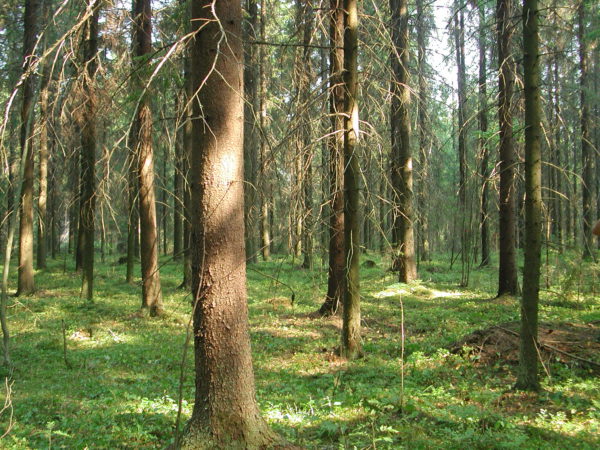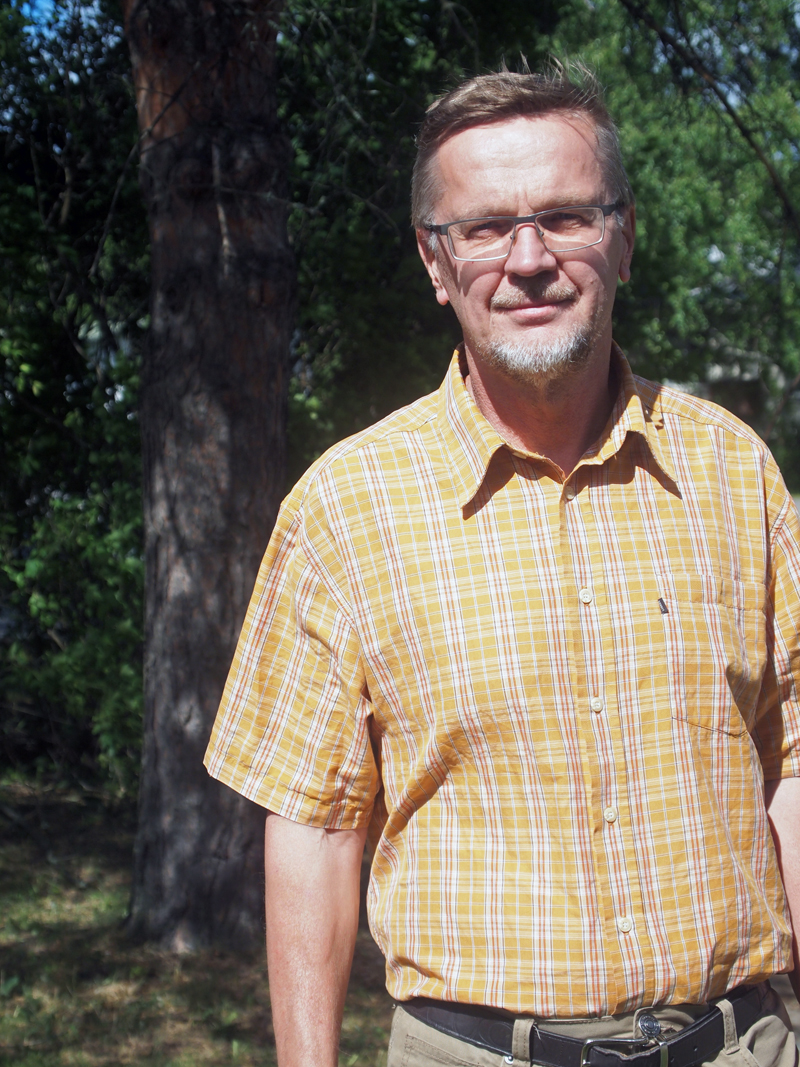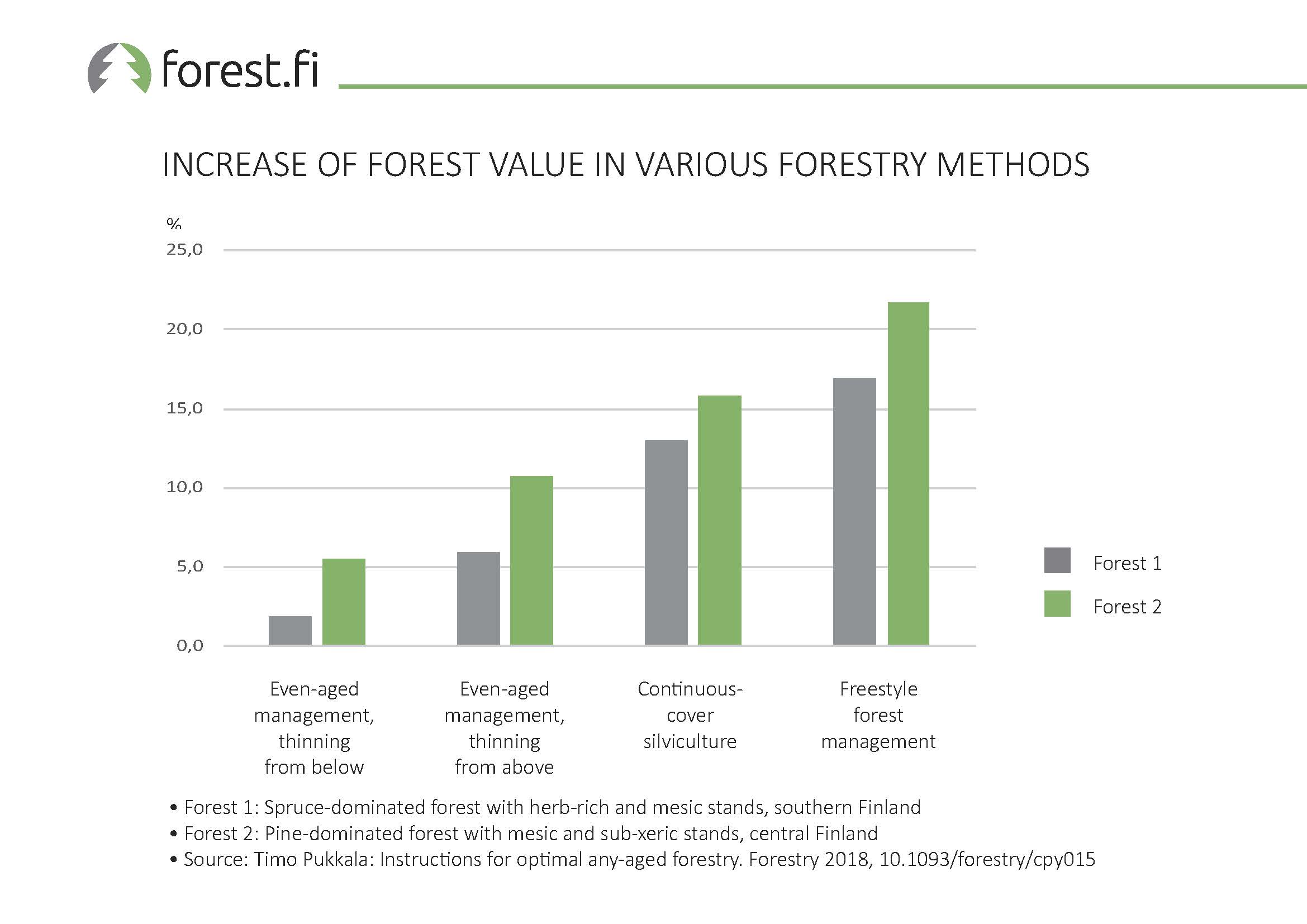Freestyle forest management challenges wrangles over logging methods – why not manage forest stands in the way that makes best sense?

Forest researcher Timo Pukkala would actually prefer not to use the terms continuous-cover or periodical when speaking about silviculture. “If we just decided how to treat our forest stands on the basis of what made best sense at the time, the productivity of forestry could increase by 15-20 percent,” says Pukkala.
Timo Pukkala, Professor of Forest Management Planning at the University of Eastern Finland, thinks that the dispute between supporters of clearcut-based forestry and those of continuous-cover silviculture is non-essential and unprofitable.
“It is of no significance which of them you support, and so is the share of continuous-cover loggings of all loggings. To classify thinnings according to whether they are based on clearcutting or continuous cover is useless, and it makes little sense to select forestry operations according to which method you support,” says Pukkala.
Pukkala is of the opinion that genuine professionals of forest property management have no interest at all in following this discussion. “Their only objective is the yield that the forest could give, not the ideology according to which the yield has been gained,” says Pukkala.
Let’s just do what makes best sense at the time
Pukkala has brought a new term into the discussion: freestyle forest management, or any-aged forestry (AAF). With this method, the forest is not cultivated according to long, in Finland regularly 70-year cycles, but neither is clearcutting avoided if it is appropriate for a given forest stand.
Pukkala would manage the forest by deciding about each logging individually. “It is possible to plan forestry operations for long periods of time, but in reality, we don’t know what the forest will look like in 20 years,” says Pukkala.
“Nor do we need to know. The only thing we really must know is what would be best for the forest stand just now.”
Pukkala has produced guidelines for any-aged forestry. The key element in them is the logging decision: whether to thin or carry out a regeneration felling or none at all. Other operations, such as soil preparation or regeneration with planting or sowing, may also have to be carried out.
According to Pukkala, the guidelines suit all types of forestry. “Regeneration felling may be a good option if the trees are large and there is no younger layer of pulpwood or smaller seedlings, that is, undergrowth,” says Pukkala.
If thinning is recommended, the guidelines help you decide whether to thin from above, removing the larger trees, or from below, removing the smaller trees. In both cases the guidelines tell you how much should be logged from each size category of trees.

Trees should exceed the value threshold
The guidelines are based on research covering more than 2,000 forest stands. The logging options were compared on the basis of five different interest rates, as interest has a significant effect on the profitability of forestry.
Interest is important, because clearcut-based forestry binds capital and you must always pay interest on bound capital. In practice this means that you must establish a new forest stand after a clearcut, and this costs money.
Thinning, on the other hand, does not result in a similar obligation, and the money earned can be invested wherever it will yield the most attractive revenue.
In his research Pukkala also simulated regeneration through planting or sowing in cases where there were not enough trees or undergrowth to produce a new tree generation on the stand after logging. Damage to undergrowth during logging was also simulated.
All this created over 100,000 situations requiring a logging decision, and each was assessed with regard to the profitability of logging, logging methods and other forestry operations.
Pukkala uses the concept of value threshold, which refers to a stage of growth when the value of the tree trunk makes an upward leap.
There are several value thresholds during a tree’s life. The most obvious one occurs when the trunk is stout enough to produce one log. The last value threshold before the forest stand is mature for regeneration occurs when a trunk produces three logs. “This is the size that forestry should aim at,” says Pukkala.
Using this method, a typical forest stand in southern Finland should be logged at intervals of 15 years, while in northern Finland the interval could be even 50 years.
Pukkala would log and sell only trees producing two or three logs and leave the rest to grow. This would decrease the value of the forest maximally and the growth of value minimally.
Would industry get what it needs?
In concrete terms, if your forest has both full-sized trees and trees only about to reach a sufficient size, you should log the largest ones and leave the others. In particular, Pukkala would leave pulpwood, meaning the smaller trees used as raw material in the pulp and paper industries.
If Pukkala’s method was to gain ground, would the availability of pulpwood decrease and that of stout timber increase? If yes, would the supply meet industrial demand? After all, trees are grown to be sold to the forest industry, and without industry there would be no forestry at all.
According to Pukkala, the structure of supply could very well change and also affect wood prices, despite the fact that two thirds of the volume of each stout timber log is used in the pulp and paper industries.
Still, freestyle forest management would not lead to the disappearance of clearcutting. “Clearcutting and establishing a new forest stand by planting or sowing is more productive in the south and on fertile lands. In northern Finland, clearcut-based forestry is hardly profitable anywhere,” claims Pukkala.
How to measure profitability?
Pukkala has calculated the profitability of forestry using just one parameter: the return on investment in forestry. Yet this is not the only method and a great number of forest owners probably never consider it.
It is also worth noting that for most Finnish forest owners, forestry constitutes just a minor share of their income – more or less the 13th-month salary.
“Yes, we can classify them as investors and savers. The return on investment is an indicator that suits the investors,” says Pukkala.
The savers, on the other hand, may prefer a sufficient sum of money on their account at the right time to buy agricultural machinery, for example.
Then what about logging expenses? The general assumption is that selective logging is expensive in comparison to clearcutting. And so it is, if calculated per hectare.
“But if the cost is calculated per cubic metre logged, you may be surprised, because you only take out the large trees. This may yield quite a number of cubic metres per hour,” says Pukkala.
Timo Pukkala: Instructions for optimal any-aged forestry, Forestry, 2018
